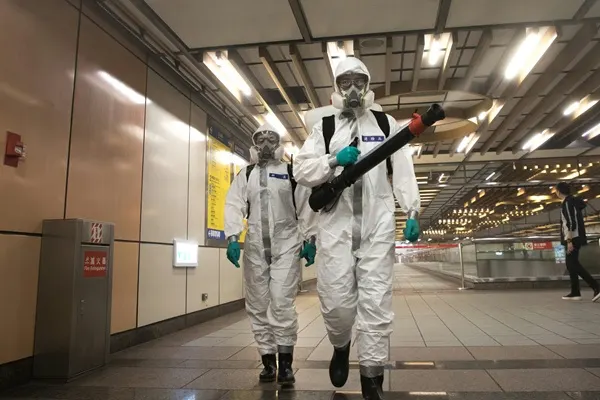The path toward sustainability in technical textiles is filled with challenges. Protective clothing must comply with strict industry standards, which restrict the incorporation of recycled or bio-based materials. Manufacturers often face a tough choice: compromise on sustainability or maintain high performance.
The end-of-life stage is particularly difficult due to the mix of synthetic polymers, coatings, and finishes. Most products resist recycling, which causes large amounts of waste to end up in landfills or incinerators. Moving toward a circular economy, where materials are reused, remains a distant goal.
In this article, we will examine sustainability challenges in technical textiles and protective clothing, and highlight environmental impact, waste management, and regulatory pressures.

Sustainability Challenges in Technical Textiles and Protective Clothing:
The Environmental Impact of Technical Textiles
Technical textiles are indispensable in industries such as healthcare, defense, and construction. However, their complex composition and heavy reliance on synthetic fibers create serious environmental challenges.
Many are made from polyester, nylon, or aramid blends, materials that resist degradation and complicate recycling. The production process also consumes significant energy and water while generating chemical waste.
A study published in Springer Open projects that medical plastics will grow by 20 percent annually from 2020 to 2025. By 2025, the total volume is expected to reach nearly 20.9 million tons. Single-use gloves are a major contributor to this waste, representing about one-third of the total mass of discarded materials.
Addressing these challenges requires innovation in material sourcing, energy-efficient manufacturing, and improved recycling and repurposing strategies. By tackling both consumption and disposal, the industry can reduce its environmental footprint while continuing to meet critical safety and protective needs.
Chemical Safety in Protective Clothing
Protective clothing shields workers from hazardous chemicals, but its effectiveness raises sustainability concerns. Chemical resistance often requires non-breathable, multilayered synthetics, which causes heat stress and environmental risks. Exposure duration, chemical concentration, and garment damage can compromise protection, while permeation remains a critical challenge.
However, despite the use of protective clothing, work-related skin diseases remain a significant occupational health issue.
The Occupational Safety and Health Administration reported that American workers encounter tens of thousands of chemicals daily, yet few are regulated. Consequently, chemical exposures cause over 190,000 illnesses and 50,000 deaths annually.
These exposures can cause cancers and diseases affecting the lungs, kidneys, skin, heart, brain, nerves, and reproductive system. This highlights the importance of using protective clothing.
Balancing Performance with Sustainability
Protective textiles are designed to meet strict standards for flame resistance, water repellency, and durability. Traditionally, these qualities have been achieved through coatings and finishes containing PFAS, or “forever chemicals.”
While effective, PFAS have raised serious health and environmental concerns that now challenge the sustainability of protective clothing. The dangers of PFAS came to light through military base firefighting foam exposure claims.
According to TorHoerman Law, exposure to PFAS in AFFF firefighting foam has been linked to cancer and other severe health problems. Widely used in military training, flight decks, and airports to fight liquid fuel fires, AFFF brought attention to the critical dangers of PFAS.
This issue also affects textiles, as many protective garments still use PFAS-based treatments for flame and water resistance. With rising health concerns, the industry is under pressure to adopt safer alternatives, like bio-based fibers and non-toxic finishes. The goal is to protect both users and the environment without compromising performance.
Recycling and End-of-Life Challenges
Recycling technical textiles and protective clothing is challenging because their multilayered structures, mixed fibers, and chemical coatings enhance durability. Unlike conventional fabrics, these materials resist breakdown, making mechanical or chemical recycling costly and often inefficient. As a result, a large proportion ends up in landfills or incinerators, contributing to pollution and greenhouse gas emissions.
A study published by ScienceDirect highlights significant recycling challenges in textiles. The industry produces 53 million tons of textile fiber each year. However, less than 1% of this material is recycled into new clothing, which emphasizes the end-of-life issues in technical textiles and protective clothing.
Future Directions for Sustainable Technical Textiles
The future of sustainable technical textiles requires a multi-pronged approach embracing a circular economy. Innovations focus on the entire lifecycle, from bio-based alternatives to advanced recycling technologies. Research targets bio-based polymers from renewable sources, which offer similar performance with lower carbon impact.
Chemical recycling can restore multi-material textiles into original monomers for new fibers. Product design plays a key role, using single-fiber materials and avoiding hazardous finishes. Smart textiles with sensors can extend garment life and reduce premature disposal.
The global green fibers market, which includes bio-based and recycled materials, is experiencing rapid growth, states Market Research Future. Valued at $48.12 billion in 2024, the market is projected to reach $140.62 billion by 2034. It signifies a strong compound annual growth rate (CAGR) of 11.3%, driven by increasing demand for sustainable materials in various industries.
Frequently Asked Questions
How expensive are eco-friendly technical textiles?
Eco-friendly technical textiles are generally more expensive than conventional options due to higher production costs, advanced research, and limited large-scale adoption. Prices vary by fiber type and treatment. However, long-term savings from durability, compliance, and sustainability benefits can offset the initial investment.
Do regulations push the textile industry toward safer chemicals?
Yes, regulations drive the textile industry toward safer chemicals by limiting hazardous substances and enforcing compliance. Frameworks like REACH in Europe promote eco-friendly alternatives. These rules encourage innovation, enhance worker safety, and reduce environmental harm throughout the supply chain.
Can protective clothing be both recyclable and flame-resistant?
Yes, protective clothing can be both recyclable and flame-resistant, though achieving this balance is challenging. Advances in bio-based fibers, recyclable aramids, and non-toxic flame-retardant treatments offer potential solutions. Prioritizing circular design while meeting performance standards ensures protection and minimizes environmental impact.
Balancing Protection with Planetary Responsibility
The technical textiles and protective clothing sector faces a critical crossroads, which requires alignment of safety, performance, and sustainability. These materials protect human lives in vital industries, yet their environmental and chemical impacts remain significant. Challenges in recycling, chemical safety, and end-of-life management demand urgent action.
Innovations in sustainable fibers, eco-friendly coatings, and circular design provide a path forward. Collaboration across industry, regulation, and research can ensure protection today and preserve resources for the future.
- You may love to read: What is Fast fashion | Its Advantages and Disadvantages
- Materiality and Sustainability in Fashion and clothing
- Sustainability Issues for Textile and Clothing Industry
- Popular Choices for Sustainable Fashion in Pakistan
- Ethics in the Textile Industry: Challenges and the Way Forward


